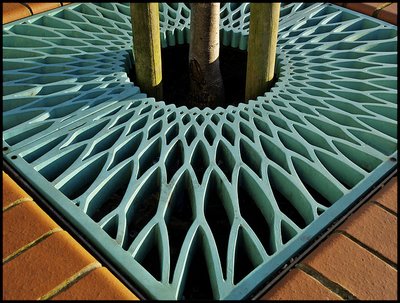The disease is known as small-scale urban renewal! It comes about when a local authority decides that an area is looking scruffy and needs a "make-over". A pot of money is found, ideas are formulated, workmen go in and tear up the local fabric, replacing it with prettier, tidier features. Then the whole project is left to slowly succumb to the everyday knocks that a bustling community delivers to its outside spaces. What rarely seems to feature in these schemes is a budget to allow the maintenance of the new fabric. The idea that spending a little on a regular basis to preclude having to rip everything out and start again a few years down the line rarely seems to figure in anyone's thinking.
The main shopping street in the town of Fleetwood, Lancashire, had such a make-over a few years ago. New lamps, seating, bins, paving and trees were installed. The whole suite of street furniture was obviously "designed" and colour co-ordinated. It was an undoubted improvement of the area. But the signs of lack of ongoing maintenance are beginning to show, and that's a real shame, not only for the area, but also for the way in which the effectiveness of the initial spending is reduced in value. My photograph shows a decorative metal grid on top of a brick planter that holds a tree and its supports. This is standing up well to the ravages of time. The colour of the grid had clearly been designed to work with the bricks, and I decided to select part of the feature for a symmetrical photograph. I used a wide zoom lens at 44mm (35mm equivalent), with the camera at 100 ISO, Aperture Priority (1/250 sec, f5.6), and EV at -0.7.
photograph & text (c) T. Boughen
